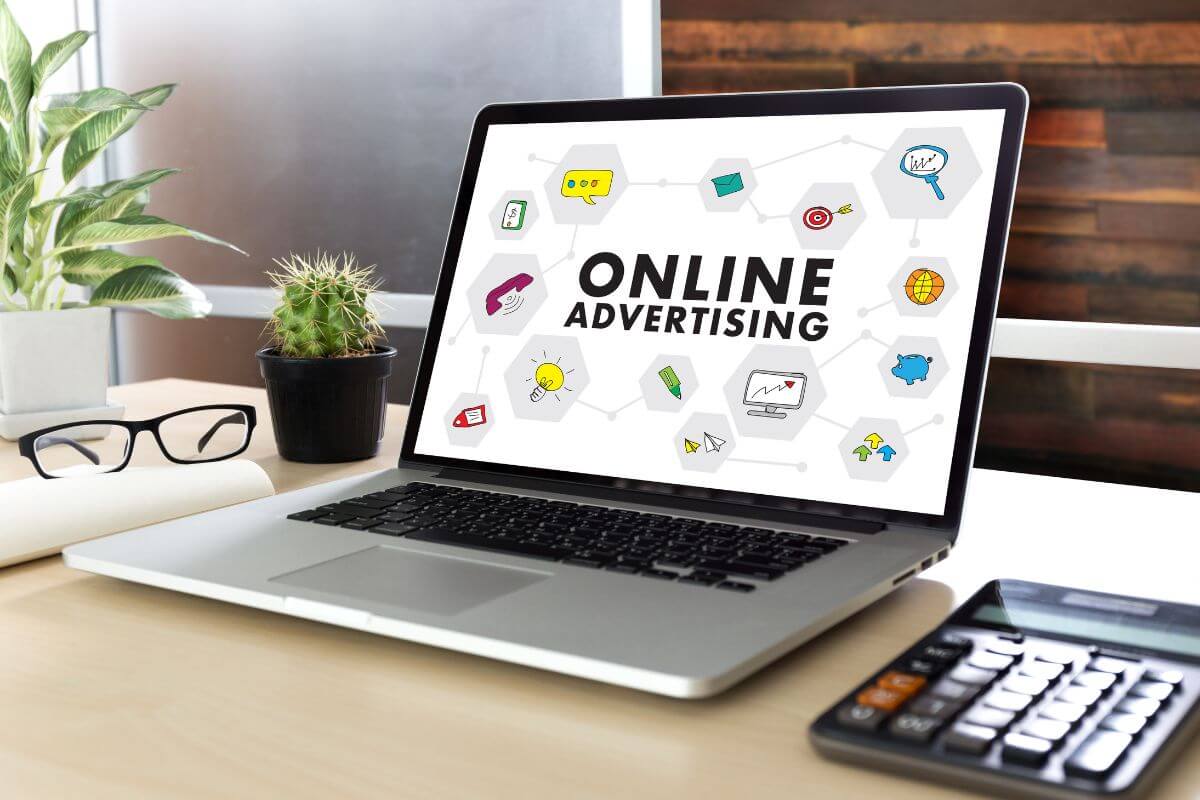Online advertising has revolutionized the way businesses promote their products and services, offering numerous advantages over traditional advertising methods.
In today’s digital age, leveraging online platforms for marketing purposes has become essential for businesses aiming to reach and engage with their target audience effectively.
Here are some key benefits of online advertising:
1. Global Reach
One of the primary advantages of online advertising is its ability to reach a vast global audience.
Unlike traditional advertising, which is often limited by geographic boundaries and audience demographics, online advertising allows businesses to connect with potential customers worldwide.
This global reach is facilitated through various digital channels such as search engines, social media platforms, and websites, ensuring that brands can expand their market presence beyond local or regional boundaries.
2. Targeted Audience
Online advertising offers sophisticated targeting capabilities that enable businesses to reach specific audiences likely to be interested in their products or services.
Advertisers can target users based on demographic information (age, gender, income), geographic location, interests, behaviour (such as past purchases or browsing history), and more.
This targeted approach ensures that ads are shown to relevant individuals, increasing the likelihood of engagement and conversion.
3. Cost-Effectiveness
Compared to traditional advertising methods like print, radio, or television ads, online advertising is often more cost-effective.
Advertisers can set flexible budgets and pay for ads based on metrics such as cost-per-click (CPC), cost-per-impression (CPM), or cost-per-acquisition (CPA).
This allows businesses with varying budgets, from small startups to large corporations, to participate in digital advertising and compete on a level playing field.
4. Measurable Results
One of the significant advantages of online advertising is its measurability. Digital advertising platforms provide comprehensive analytics and performance metrics that allow advertisers to track and measure the effectiveness of their campaigns in real-time.
Metrics such as clicks, impressions, conversion rates, return on investment (ROI), and customer acquisition cost (CAC) provide valuable insights into campaign performance.
This data-driven approach enables advertisers to optimize their strategies, allocate budgets more effectively, and achieve higher ROI.
5. Flexibility and Control
Online advertising offers advertisers greater flexibility and control over their campaigns compared to traditional advertising methods.
Advertisers can easily adjust campaign settings, target audience parameters, ad creatives, and budgets in real-time based on performance insights and changing business needs.
This agility allows businesses to respond quickly to market trends, competitor actions, and consumer behaviour, optimizing campaign effectiveness and maximizing results.
6. Brand Visibility and Awareness
Digital advertising helps enhance brand visibility and awareness by exposing brands to a larger audience across various online channels.
Consistent presence through targeted ads on search engines, social media platforms, websites, and mobile apps increases brand recognition and recall among consumers.
This heightened visibility helps build brand authority, trust, and credibility over time, especially when coupled with compelling messaging and creative content.
7. Engagement and Interactivity
Online advertising offers interactive formats such as video ads, interactive banners, and social media posts that engage users and encourage interaction.
These interactive elements allow brands to create immersive and memorable experiences for consumers, driving higher engagement rates and fostering deeper connections.
Interactive advertising formats also enable direct communication with consumers, encouraging feedback, inquiries, and user-generated content, which can further amplify brand reach and engagement.
Types of Online Advertising
The internet is continuously changing, and so are online advertising possibilities. There are many various sorts of advertisements that may be included in a digital marketing strategy today.
It’s critical to stay up to speed on the newest trends, techniques, and strategies as the digital advertising industry evolves. Different digital advertising platforms can be used together to build a 360° campaign, or they may be utilized separately.
Keep reading if you want to learn more about both different sorts of internet advertising and the many campaign design options accessible.
Online advertising encompasses various types and formats, each tailored to achieve specific marketing objectives and engage different audience segments. Here’s an overview of the primary types of online advertising commonly used by businesses:
1. Search Engine Marketing (SEM)
a. Search Engine Optimization (SEO):
- Description: SEO focuses on optimizing websites to improve their visibility and ranking in organic search engine results pages (SERPs).
- Benefits: Generates organic traffic, enhances website authority, and improves long-term visibility without direct advertising costs.
b. Pay-Per-Click (PPC) Advertising:
- Description: PPC ads appear alongside organic search results on search engine results pages (SERPs) or on other websites within the ad network.
- Benefits: Offers immediate visibility, targets specific keywords, and allows for precise budget control based on clicks or impressions.
2. Display Advertising
a. Banner Ads:
- Description: Visual ads displayed as banners or images on websites within ad networks.
- Benefits: Increases brand awareness, offers creative flexibility, and targets audiences based on demographics, interests, or behaviour.
b. Rich Media Ads:
- Description: Interactive ads that include advanced features like video, audio, animations, or interactive elements.
- Benefits: Enhances engagement, encourages user interaction, and delivers immersive brand experiences.
3. Social Media Advertising
a. Facebook Ads:
- Description: Targeted ads displayed in users’ Facebook feeds or sidebar based on demographics, interests, and behaviors.
- Benefits: Facilitates precise audience targeting, encourages user engagement through likes, comments, and shares, and supports various ad formats (image, video, carousel).
b. Instagram Ads:
- Description: Visual ads displayed in users’ Instagram feeds or Stories.
- Benefits: Leverages Instagram’s visual appeal, reaches a younger audience demographic, and supports engaging ad formats (image, video, carousel).
c. LinkedIn Ads:
- Description: Targeted ads displayed on LinkedIn based on professional demographics (job title, industry, company size).
- Benefits: Reaches B2B audiences, supports lead generation campaigns, and enhances brand credibility among professionals.
4. Video Advertising
a. Pre-Roll Ads:
- Description: Video ads played before or during online video content on platforms like YouTube.
- Benefits: Captures viewer attention, delivers visual storytelling and targets users based on video content interests.
b. In-Stream Ads:
- Description: Video ads inserted into online streaming content, such as live streams or on-demand videos.
- Benefits: Ensures high viewability, engages captive audiences and supports skippable and non-skippable ad formats.
5. Native Advertising
a. Sponsored Content:
- Description: Paid content that matches the form and function of the platform on which it appears.
- Benefits: Blends seamlessly with editorial content, enhances user experience, and increases brand credibility through informative or entertaining content.
6. Remarketing/Retargeting
a. Display Remarketing:
- Description: Ads targeted at users who have previously visited a website or interacted with a brand.
- Benefits: Reinforces brand awareness, encourages repeat visits, and supports personalized messaging based on user behaviour.
7. Affiliate Marketing
a. Partnership Advertising:
- Description: Collaborative efforts with affiliates (bloggers, influencers) who promote products or services in exchange for a commission.
- Benefits: Expand reach through affiliate networks, leverage influencer credibility, and drive traffic and sales through targeted promotions.
8. Email Marketing
a. Promotional Emails:
- Description: Direct marketing emails sent to a targeted list of recipients promoting products, offers, or announcements.
- Benefits: Personalizes messaging, nurtures customer relationships, and supports segmented campaigns based on subscriber preferences.
Choosing the right types of online advertising depends on business goals, target audience preferences, and budget considerations.
By leveraging these diverse formats effectively, businesses can enhance brand visibility, engage with their audience, and drive conversions in today’s competitive digital landscape.
Each type of online advertising offers unique benefits and opportunities for businesses to reach and connect with their target market efficiently and effectively.





